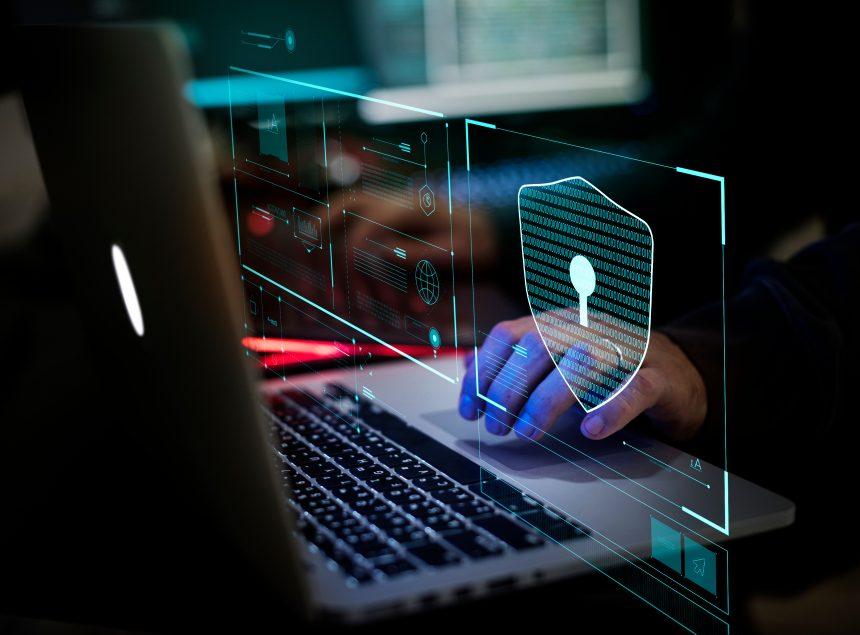Every October, Cybersecurity Awareness Month serves as a vital reminder of the significance of cybersecurity and the critical role each of us plays in safeguarding our digital environments. This initiative promotes awareness across individuals, organizations, and government entities, emphasizing that protecting our online presence is a shared responsibility. The theme for 2024, “Cybersecurity Through Vigilance,” underscores the necessity for continuous vigilance and proactive measures against cyber threats.
Understanding Cyber Threats
In our increasingly digital world, being informed about various cyber threats is essential for effective protection. Here are some of the most common and dangerous threats individuals and organizations face today:
- Phishing: Phishing attacks involve deceptive emails or messages crafted to trick individuals into revealing sensitive information, such as passwords or financial details. These scams can be remarkably sophisticated, often mimicking legitimate companies or contacts. Variations include spear phishing (targeting specific individuals) and whaling (targeting high-profile executives).
- Ransomware: Ransomware is a malicious software that encrypts files on a user’s device, rendering them inaccessible until a ransom is paid. Ransomware attacks have surged in recent years, affecting individuals, businesses, and even critical infrastructure. High-profile attacks, such as the Colonial Pipeline and JBS Foods incidents, demonstrate how ransomware can disrupt operations and lead to significant financial losses.
- Malware: This broad category encompasses various types of software intended to harm, exploit, or compromise a device or network. Common forms of malware include viruses, worms, and Trojans. Advanced Persistent Threats (APTs) represent a more sophisticated form of malware, where attackers gain prolonged access to networks, often to steal sensitive information over time.
- Data Breaches: Unauthorized access to sensitive data can occur due to poor security practices, unpatched vulnerabilities, or social engineering attacks. High-profile data breaches, like those affecting Equifax and Yahoo, expose personal and financial information of millions of users, leading to identity theft and significant reputational damage for the organizations involved.
- Denial-of-Service (DoS) Attacks: These attacks overwhelm a system or network with traffic, rendering it unavailable to users. A Distributed Denial-of-Service (DDoS) attack employs multiple systems to flood the target, causing severe disruptions to online services. Organizations must implement robust defenses to mitigate these attacks and maintain service availability.
- Insider Threats: Not all threats come from outside an organization. Insider threats can stem from disgruntled employees, negligent staff, or compromised insiders who inadvertently or maliciously cause data breaches. Implementing strict access controls and monitoring can help mitigate these risks.
- IoT Vulnerabilities: The proliferation of Internet of Things (IoT) devices has introduced new vulnerabilities. Many IoT devices lack robust security features, making them easy targets for attackers. Compromised IoT devices can be leveraged for various malicious activities, including DDoS attacks and unauthorized data collection.
- Supply Chain Attacks: Cybercriminals may infiltrate organizations by targeting third-party vendors or suppliers. By compromising a trusted partner’s system, attackers can gain access to sensitive data or disrupt operations. Notable examples include the SolarWinds attack, where hackers exploited vulnerabilities in a widely used software platform to breach numerous organizations.
The Role of Individuals and Organizations
Every individual plays a vital role in their digital safety. Just as a pilot must be vigilant about equipment failures, individuals must be aware of cyber vulnerabilities in the systems they use. For instance, the U.S. Navy is enhancing its tools for real-time cyber monitoring and promoting a culture of vigilance among personnel. This initiative fosters a collaborative approach to cybersecurity, ensuring that everyone is equipped to identify and report potential threats.
Organizations must also implement comprehensive cybersecurity training for employees. By providing regular education about recognizing threats, practicing safe browsing habits, and following security protocols, organizations can significantly reduce their risk of falling victim to cyber attacks. It’s essential to foster a culture of security awareness, where employees feel empowered to report suspicious activities without fear of repercussion.
Why Choose SpyHunter for Ultimate Security
In navigating today’s complex cyber landscape, robust security solutions are essential. SpyHunter stands out as a leading tool for protecting against malware and other cyber threats. Key features include:
- Real-time Threat Detection: This feature allows users to identify and mitigate risks instantly, ensuring a quick response to emerging threats. Continuous monitoring helps users stay one step ahead of potential attacks.
- Comprehensive Scanning: SpyHunter thoroughly examines systems for vulnerabilities, providing users with an in-depth analysis of potential risks. Regular scans can help detect hidden malware and other security threats.
- User-Friendly Interface: Designed for both tech-savvy individuals and novices, SpyHunter’s intuitive interface simplifies the process of managing security. Users can easily navigate through the software and access critical features without technical expertise.
- Automatic Updates: SpyHunter frequently updates its database to protect against the latest threats, ensuring users remain secure in a constantly evolving digital landscape. Staying updated is crucial for maintaining effective defenses.
- 24/7 Customer Support: SpyHunter offers round-the-clock customer support to assist users with any issues or questions they may encounter. This commitment to customer service enhances the overall user experience and ensures help is readily available when needed.
By implementing SpyHunter, individuals and organizations can enhance their cybersecurity posture, effectively protecting personal and sensitive data from malicious attacks.
Download SpyHunter Now & Scan Your Computer For Free!
Remove this and any other malicious threats to your system by scanning your computer with SpyHunter now! It’s FREE!
Best Practices for Cyber Hygiene
To complement tools like SpyHunter, individuals should adopt best practices for cyber hygiene, including:
- Regular Software Updates: Keeping software and operating systems up to date reduces the risk of exploitation by cybercriminals. Regularly check for updates and apply them promptly.
- Strong Password Policies: Use complex passwords and change them regularly. Consider using password managers to generate and store secure passwords.
- Multi-Factor Authentication (MFA): Enable MFA wherever possible, adding an extra layer of security to accounts. This makes it significantly harder for attackers to gain unauthorized access.
- Secure Backups: Regularly back up important data to mitigate the impact of a ransomware attack or data breach. Store backups in a secure, off-site location or use cloud services with robust encryption.
- Educate Yourself and Others: Stay informed about the latest cyber threats and educate family, friends, and colleagues about safe online practices. Knowledge is one of the most effective defenses against cyber threats.
- Limit Personal Information Sharing: Be mindful of the information shared online, especially on social media. Cybercriminals often use publicly available information to craft targeted attacks.
Conclusion
Cybersecurity Awareness Month is a powerful reminder that we all play a role in protecting our digital lives. By understanding the threats we face and utilizing tools like SpyHunter, we can create a safer online environment for ourselves and our communities. It’s essential to stay vigilant, educate ourselves, and take proactive steps to ensure our cybersecurity.
As we observe Cybersecurity Awareness Month, let’s commit to being vigilant and informed. Together, we can make significant strides in securing our digital world against the ever-evolving landscape of cyber threats.





